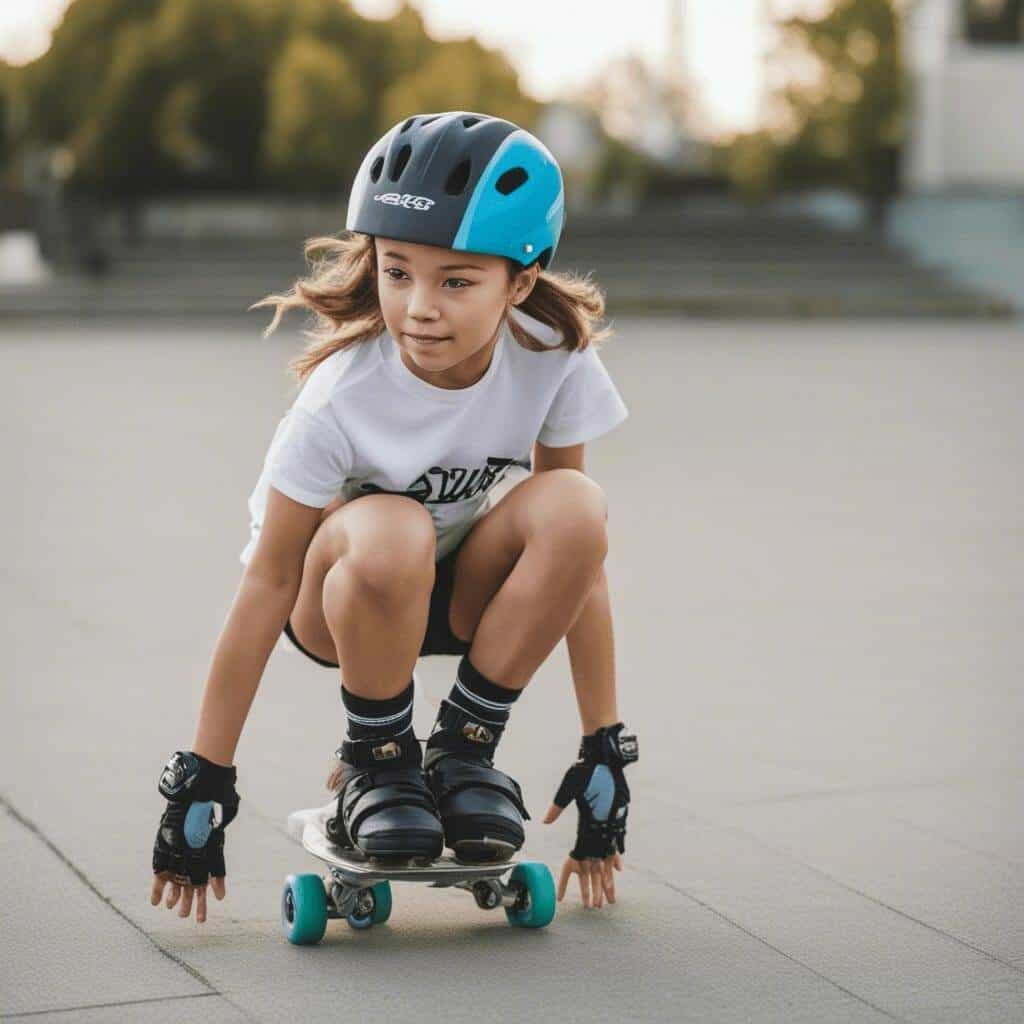Table of Contents
Table of Contents
Learning Roller Skating Solo: A Beginner’s Roadmap
Embarking on the journey of roller skating solo blends the thrill of discovery with the joy of physical activity. If you’re gearing up to navigate this path alone, the wind in your hair and a sense of accomplishment awaiting, you’ve picked a rewarding challenge.
This guide demystifies the process, offering you the knowledge and confidence needed to progress from novice to confident skater.
Step 1: Selecting Your Skates
Quad vs. Inline: The first step is choosing between quad and inline skates.
Quad skates, with their two front and two rear wheels, offer stability and ease, making them ideal for beginners.
Inline skates, with a single line of wheels, demand more balance but excel in speed and agility. Consider your goals and choose accordingly.
OutdoorMaster Skateboard Cycling Helmet - Two Removable Liners Ventilation Multi-Sport Scooter Roller Skate Inline Skating Rollerblading for Kids, Youth & Adults
$33.98 (as of 06/29/2024 12:03 GMT +01:00 - More infoProduct prices and availability are accurate as of the date/time indicated and are subject to change. Any price and availability information displayed on [relevant Amazon Site(s), as applicable] at the time of purchase will apply to the purchase of this product.)Step 2: Mastering the Basics
Fundamentals First: Begin with mastering the basic stance and movements.
For quads, focus on keeping your knees slightly bent and your feet shoulder-width apart.
Inline skaters should also maintain a slight forward lean to balance.
Practice starting, stopping, and gliding in a safe, flat area.
Step 3: Safety Gear Is Non-Negotiable
Protection with Style: Before you get going, gear up with essential safety equipment—helmets, knee pads, wrist guards, and elbow pads.
Choose gear that not only protects but also reflects your personal style, ensuring safety meets fashion.
Step 4: Practice Makes Perfect
Regular Drills: Dedicate time to practice regularly. Begin with short, manageable sessions, focusing on basic skills like balancing, turning, and stopping.
Gradually increase complexity and duration as you gain confidence.
Step 5: Embrace the Falls
Learning to Fall Safely: Falls are inevitable but learning to fall correctly can minimize injuries. Practice falling on softer surfaces, aiming to land on padded areas.
Learn to fall forward and to one side to reduce injury.
Mastering this skill early is crucial for a safer skating experience.
Step 6: Advancing Your Skills
Elevate Your Skating: Once comfortable with basics, challenge yourself with more advanced techniques.
Start with crossovers, this will help with going around tight corners.
Try different skating environments, like rinks or parks, and experiment with speed, agility drills, and even tricks as your confidence grows.
Step 7: Maintenance and Upgrades
Skate Care: Regularly inspect your skates for wear and tear.
Maintaining your gear ensures a safer and more enjoyable experience. As you progress, consider upgrading your skates or components to match your evolving skills.
Retrospec Retrospec Dakota Bike Helmet - Skateboard Helmet Premium Protection Multi-Sport Bike, BMX, Skating, Scooter, and Skate Helmet
$26.99 (as of 06/29/2024 12:03 GMT +01:00 - More infoProduct prices and availability are accurate as of the date/time indicated and are subject to change. Any price and availability information displayed on [relevant Amazon Site(s), as applicable] at the time of purchase will apply to the purchase of this product.)Conclusion: The Roller Skating Journey
Roller skating offers a unique blend of freedom, fitness, and fun.
By starting with the right equipment, embracing the learning process, and gradually challenging yourself, you’ll not only master the basics but also unlock the joy of skating.
Remember, every skater’s journey is personal and filled with its own set of triumphs and challenges. Stay patient, keep practising, and most importantly, enjoy the ride!



